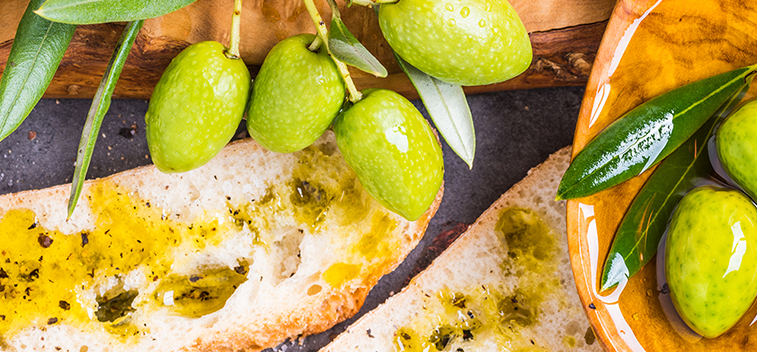
Olives are part of many recipes from all the Mediterranean countries. They are taken at breakfast, as in Turkey, they are an essential aperitif in Spain, Greece and Portugal. They perfectly accompany meats and fish; They are present in rice, salads or pizzas, and are even taken as a dessert.
The olives are native to Greece and Asia Minor; the olive trees began to spread throughout the Mediterranean more than 6000 years ago, thus beginning the olives to be part of our Mediterranean diet.
They take place between the months of June and October, reaching full maturity in December. From November to January olives are harvested for oil production, while those dedicated to direct consumption are collected beforehand and by hand, so as not to damage the fruits. The olives have a bitter taste, something unpleasant, that disappears after successive washings with water or with a mixture of water and soda.
Maybe you do not know, some of its properties:
They are beneficial for our health: From them you get olive oil, one of our superfoods. Experts recommend taking seven units a day, better by midmorning. Among other benefits:
- They are very good for people who have anemia, because of its high iron content. (Black contains more than green)
- Prevent heart and circulatory system diseases, which are rich in unsaturated fats and regulate cholesterol levels.
- Help improve our defenses, containing vitamins A and C.
- They have a lot of fiber, to help regulate the intestine and against constipation.
- They contain vitamin E (100 grams of olives give us 3 mg). The recommended daily amount of vitamin D is 12 mg per day.
- Because their sodium intake is somewhat high, nutrition specialists recommend people with hypertension to have moderate consumption.
They belong to the group of fruits: The olives have peel, pulp and seed or bone. And although they are atypical fruits because they are rich in fats. 75% of its pulp is water, but also stores oleic acid, very beneficial for health, since it increases the good cholesterol.
One liter of virgin olive oil equals 5 kilos of olives: Depending on the type of olive used, olive oil will have different flavors. Although only 270 olive species are planted in Spain, only 10 of them are used for this purpose.
You can not eat directly from the tree: Raw olives are not edible; some varieties need up to a year to be cured (like Cordovan olives). Because of their content in oleuropein (very bitter compound), they have to be treated. To eliminate this compound, they have to go through a sweetening process, which can take up to 12 months.
Change color during ripening: That's why some olives are green, others reddish, others black. The color depends on the stage of maturation in which they are picked, the greens have not yet matured when they are picked, if they were allowed to mature, they would begin to darken until they fully mature; that is when they turn black.
The olives do not fatten: That's what the scientific studies on olives say. In addition to demonstrating that these are one of the healthiest foods of the Mediterranean diet, 100 grams of green olives contain 110 Kcal and 100 grams of black olives contain 294 Kcal .
SOURCE: La Razón.